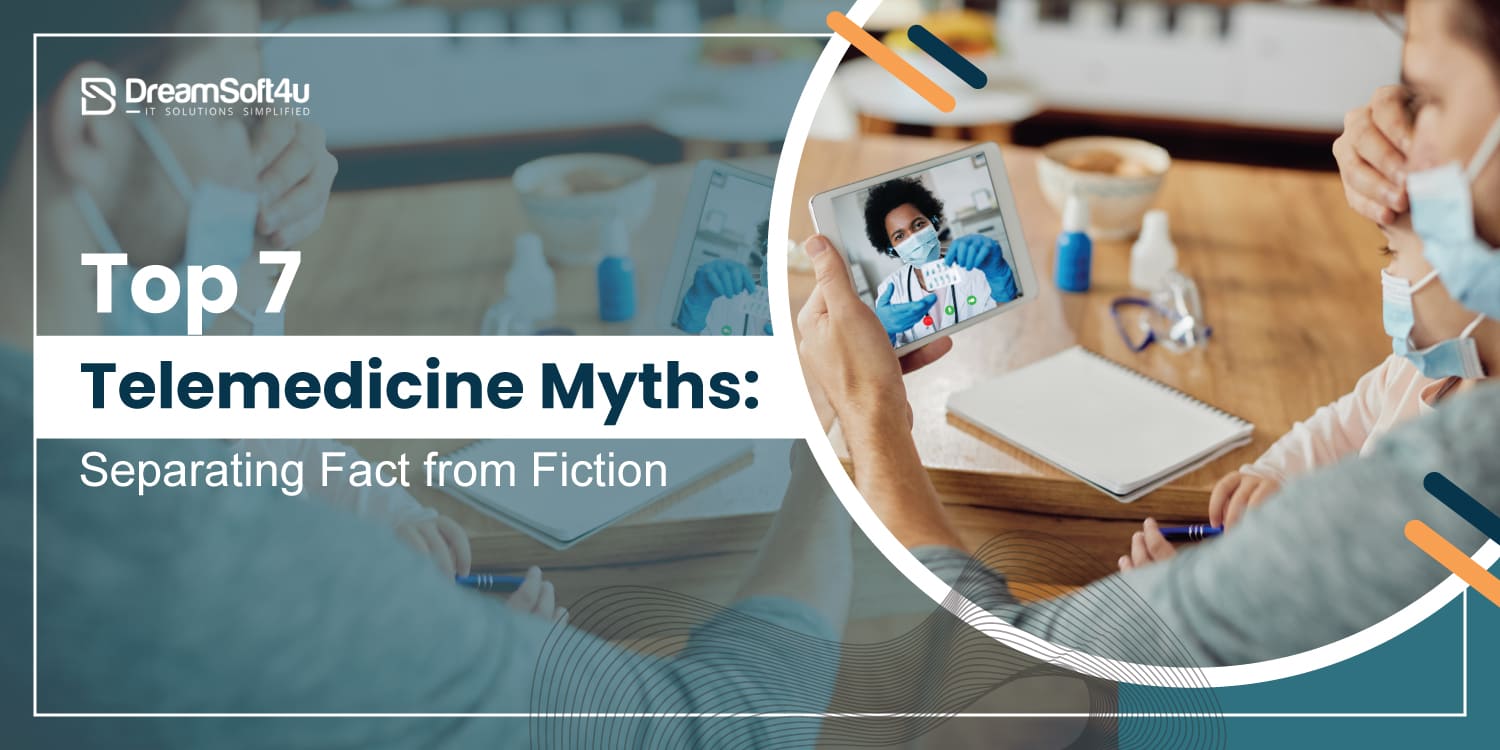Telemedicine Myths: many people misunderstand that telemedicine isn’t legal and pricey, much more. Telemedicine software Development Company is at a rising and growing stage but people still feel insecure and have misconceptions that make people refuse to embrace telemedicine.
Given the particularly slow adoption of technology in healthcare, the idea of telemedicine might still be new to clinicians and physicians. Telemedicine is gaining ground. Telemedicine is described simply as “the remote distribution of healthcare services.“
In this article, we will discuss some of the Telemedicine myths.
Table of Contents
ToggleWhat is Telemedicine?
Originally, telemedicine was developed as a means to treat people who were in rural areas, far from nearby health centers, or in places where medical providers were in short supply. Though telemedicine Myths are still used to tackle these issues, it is becoming increasingly a platform for easy medical care.
In other words, Telemedicine refers to the process of actively caring for patients where both the physician and the patient are not physically accessible. New technology has allowed physicians to treat patients with HIPAA-compliant videoconference software.
Common Myths about Telemedicine
Below are some of the common myths about telemedicine:
#Myth 1: Information isn’t secure
You are also worried about the confidentiality of your details which is extremely sensitive. We appreciate your concern and how important it is that you have faith in the process. We promise you nothing to be concerned about. Telemedicine does not require the use of common technology such as Skype or Facetime, but rather the use of channels that conform 100% to HIPAA regulations, as with any daily physician workplace.
#Myth 2: I need to do a physical exam
Few physicians claim that providing professional patient treatment requires an in-person examination. Although in certain cases an in-person inspection is necessary, there are still plenty of situations that don’t require one. Only think about all the situations you have been struggling with in the past over the internet. Knowing the medical history of the patient and the reported signs is appropriate for certain mild acute illnesses to identify without a physical test. Furthermore, the telemedicine app is also useful for quick follow-up calls or post-op checks that do not normally require a physical evaluation anyway.
You May Also Like:
#Myth 3: Telemedicine is just about urgent care
Although true telemedicine systems may be a nice option for attending an emergency room or the ER, this is not the only advantage. 60 percent of those polled say they want to see a specialist online to better treat their health illnesses. This makes a lot of sense because patients with chronic illnesses usually know exactly what’s going on and how they can address their needs face-to-face with a specialist over the phone.
Most Preferred Software Development Company Since 2003
Request A Free Quote
98+ Client Retention
#Myth 4: Telemedicine ruins the doctor/patient relationship
Telemedicine is not supposed to be a replacement for face-to-face appointments at a doctor’s office. Rather, it is intended to act as a complement to appointments by regular physicians. Telemedicine is perfect for occasions where you are unable to make an appointment with your primary care specialist and the condition is not serious enough for an emergency room ride. Telemedicine is a reasonable choice in many non-emergency cases where medical treatment can be provided without a doctor’s office visit.
#Myth 5: I don’t have the IT resources for telemedicine
You then have all the required IT tools. Video chat applications were developed with the goal to be easy to use, removing the need to download specific apps or something new. You can keep a virtual meeting if you can make a phone call.
The more you invest in a Telemedicine service provider, the more services you can provide patients with.
In the case of telemedicine services, it’s just not the case of the old adage, “You get what you pay for.” Telemedicine portals that are more expensive include virtual waiting rooms, a segment of the telemedicine application to record visits, patients’ options to pay for treatments, screen sharing, and more. These copy many of the functions on your EHR and your patient site. In my experience, you want to interact effectively and easily with patients from both the provider’s and the patient’s viewpoint.
#Myth 6: Telemedicine is lower quality
Not every patient can be treated remotely, or those patients should be sent to a physical place. It is critical for all patients who do undergo virtual treatment that clinicians meet the same quality criteria as their counterparts in conventional hospitals, including integrating case analysis as part of the quality management process.
Our research indicates that 64 percent of people needing treatment in a virtual pharmacy will be treated online. The remaining 36 percent are given medically appropriate referrals to conventional health system hospitals.
Another way to measure quality is by analyzing prescribing rates. Is the rate of medication for those seeking telemedicine comparable to those attending conventional clinics?
#Myth 7: Telemedicine is not legal
As new technology arises, new laws and policies do so, but not at the same time; thus, it is understandable that many people believe Telemedicine is not legal. Telehealth is perfectly legal as long as appropriate protections are in effect, all governed under the Health Insurance Portability and Accountability Act (HIPAA). You need to guarantee, for example, that you use safe, HIPAA-compliant video conferencing.
Conclusion:
Dreamsoft4u Pvt. Ltd. offers the best Telemedicine App Development Services in the USA and South Africa. As we have more than 15 years of experience in the field, we are ready to join you as a Telemedicine Partner to assist you with various kinds of Healthcare IT solutions, such as:
- HIPAA Compliance Telemedicine Software
- HL7 Solutions
- Telemedicine App Development
- Telemedicine/Telehealth Integration
- EMR/EHR System Implementation
- Remote Health Monitoring System etc.
FAQs
Q1. Which are the most popular telemedicine platforms?
A. TelaDoc, VcDoctor, Amwell, and MDLive are some popular telemedicine platforms trusted by providers worldwide.
Q2. Can telemedicine be used for emergency healthcare situations?
A. Yes, Telemedicine can be used during emergency healthcare situations. But it should never be considered an ideal alternative. A patient may require additional support or in-person follow-up care.
Q3. What are the cost considerations for telemedicine services?
A. Cost considerations for telemedicine services include technology infrastructure, equipment, licensing fees, and ongoing support and maintenance costs.
Q4. Is HIPAA compliance important?
A. HIPAA compliance is important for telemedicine services to protect patients’ personal health information and ensure confidentiality, security, and privacy.





















